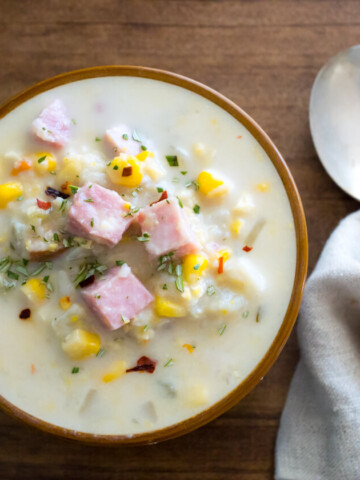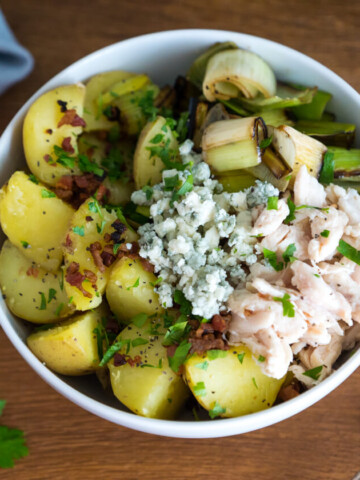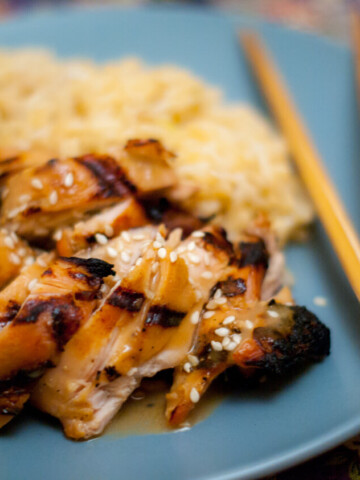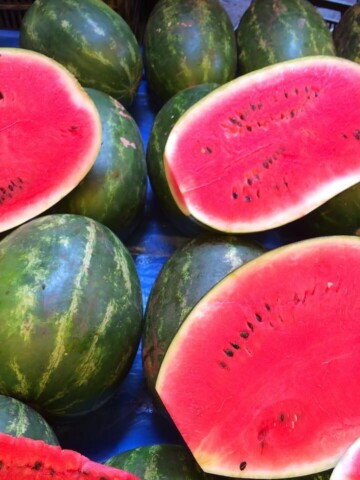If you are searching for a way to make weeknight meals quick and easy I can't think of a better place to begin than a beautifully roasted chicken.
If time is an issue, roast the chicken during the weekend when you can carve out a little more time to be near the kitchen. The hands-on time to prepare is minimal and the sensory experience alone is worth the small amount of effort to get the bird in the oven. About thirty minutes into the cooking time, first the kitchen and then the entire house will be enveloped in the perfume of crisping skin and melting sweet salty juices.
A quick note to reduce the risk of food poisoning: Always wash your hands before, during, and after working with any raw meat. Work on a clean surface that can be sanitized after you are finished. Do not use the same knives, cutting board, or other items for raw meat as cooked. Prepare other ingredients separately so they do not come in contact with the raw chicken.
When selecting you chicken you many want to consider the size. A small bird may only need about an hour while larger chickens could take two or more hours to be fully cooked. A larger bird will have more leftovers. The one pictured is around 5 pounds. Once you have it home, get ready to get really up close and personal with your dinner. Stick your hand inside and pull out anything that isn't attached, like the little bag with all the guts n' stuff (giblets). At this point I like to trim off the fatty bits around the openings. Once the chicken has cooked I can't help nibbling the crispy bits and those fatty spots get really crispy, so I try to remove some temptation before it has been created.
Once the cavity (inside of the chicken) is empty, rinse the bird under cool water inside and out. Place it in your pan and pat it dry with paper towels. (My "roasting pan" is a 13 x9 aluminum baking pan with a wire rack that came with our toaster oven.) If you do nothing else make sure to sprinkle salt and pepper on both the inside and outside of the chicken. I like to place some lemon or orange wedges and fresh herbs inside the cavity and then slide peeled whole garlic cloves under the skin. The garlic, citrus, and herbs perfume the chicken while it is cooking. As a bonus the garlic softens and takes on a nutty roasted flavor making it a wonderful addition to those entrees you are going to make later in the week or spread on the roasted chicken.
Before placing the bird in the oven I tie the ends of the legs together and sort of fold the wings back on themselves so they are more compact. Many cooks fully truss their chickens but I find these two steps are plenty in my casual kitchen.
I cook the prepared bird in a 375 degree oven and sometimes hit the top with a little butter flavored PAM or a tiny bit of olive oil right before popping it in. Check the bird a few times during the cooking process. Your nose will help you remember. If desired, spoon a little of the juice back up over the chicken while it cooks. If the skin starts to look more brown than golden but the meat hasn't finished cooking you can make a little hat out of foil to keep it from getting too dark. The chicken is done when your meat thermometer reaches 165, the juices run clear, and there is no longer any pink in the meat. Serve hot and make sure to save the juices that have collected in the pan.
A large bird can feed our family for a week. The day the chicken is roasted we will likely enjoy a traditional roast dinner featuring the chicken accompanied by a starch and at least one vegetable; so retro. A day or so after cooking I'll roll up my sleeves and remove the remaining meat from the bones. As the week progresses the meat may be sliced for sandwiches or diced and added to any number of quick entrees. The non-meat bits get tossed into a pot to become an intense chicken stock.
Chicken Stock
Alton Brown has a great recipe for making chicken stock. I will be borrowing some of his techniques next time I make a stock. Recently I took a more humble approach to stock making. My efforts resulted in an amber stock with a rich roasted chicken flavor.
Ingredients
- Remains of 1 chicken after most of the meat has been removed, bones and some skin.
- chilled juices drained from the chicken's roasting pan, with solidified fat removed
- 1 onion cut into large chunks
- 3 cloves of garlic cut in half
- a handful of chopped assorted fresh herbs - oregano, sage, parsley, chives, rosemary
- 8 cups of water + more as needed
- salt to taste, a teaspoon or so
- Place ingredients with 8 cups of water in a large soup pot and allow to simmer over medium low heat for about 8 hours. Check stock periodically and add more water as needed to maintain the same volume of liquid.
- Taste the stock from time to time and add salt as needed.
- Once the stock has achieved a deep chicken flavor carefully ladle the stock through a mesh strainer into a large container. Once cooled store in the refrigerator to use within a few days or in the freezer to be used within a few months.
Use this stock as the base for soup or sauces, to cook grains, or other dishes that would be enhanced by the flavor and moisture of a good chicken stock. I just happen to have one in mind and I'll share it soon...











Leave a Reply